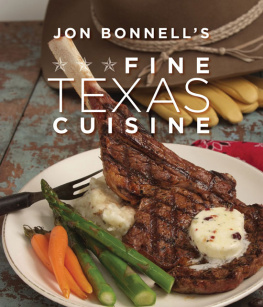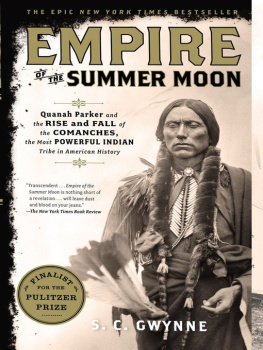The Most Land, the Best Cattle
An imprint of Globe Pequot, the trade division of The Rowman & Littlefield Publishing Group, Inc.
4501 Forbes Blvd., Ste. 200
Lanham, MD 20706
www.rowman.com
Distributed by NATIONAL BOOK NETWORK
Copyright 2021 by Judy Alter
Photos courtesy Fort Worth Star Telegram Collection, Special Collections, The University of Texas at Arlington Library, Arlington, Texas.
With the exception of:
p. 7, Courtesy Southwest Collection/Special Collections Library, Texas Tech University. 138 Envelope 4
p. 103, Edward Steichen, Vogue Cond Nast
All rights reserved. No part of this book may be reproduced in any form or by any electronic or mechanical means, including information storage and retrieval systems, without written permission from the publisher, except by a reviewer who may quote passages in a review.
British Library Cataloguing in Publication Information available
Library of Congress Cataloging-in-Publication Data
Names: Alter, Judy, 1938- author.
Title: The most land, the best cattle : the Waggoners of Texas / Judy Alter.
Other titles: Waggoners of Texas
Description: Helena, Montana : Two Dot, [2021] | Includes bibliographical refrerences. | Identifiers: LCCN 2021009796 (print) | LCCN 2021009797 (ebook) | ISBN 9781493052639 (cloth) | ISBN 9781493052646 (epub)
Subjects: LCSH: Wagner family. | W.T. Waggoner Ranch (Tex.) | RanchersTexasBiography. | TexasGenealogy.
Classification: LCC CS71.W134 2021 (print) | LCC CS71.W134 (ebook) | DDC 929.20973dc23
LC record available at https://lccn.loc.gov/2021009796
LC ebook record available at https://lccn.loc.gov/2021009797
 The paper used in this publication meets the minimum requirements of American National Standard for Information SciencesPermanence of Paper for Printed Library Materials, ANSI/NISO Z39.48-1992.
The paper used in this publication meets the minimum requirements of American National Standard for Information SciencesPermanence of Paper for Printed Library Materials, ANSI/NISO Z39.48-1992.
Contents
Guide
IN THE EARLY 1980S, I SPENT A COUPLE OF DAYS AT SANTA Rosa, the home of Electra Waggoner Biggs, on the Waggoner Three D Ranch in North Texas. I dont remember how I wrangled the invitation, but I know I went because I was interested in her as a sculptor. She was, in my eyes, a classic case of an heiress who could have spent her days reading Silver Screen and eating bonbons but instead developed her art and career. I went expecting to find evidence of her life as an artist.
Instead, I found an international celebrity, an heiress, and a sculptorin that order of priorities. Electra was also a widow, mother of two daughters, and grandmother of four. But glimpses of those areas of her life rarely came up except for references to her husband, the late John Biggs. Her daughters didand still dokeep a much lower profile than earlier generations of their colorful family.
My memories of the visit have grown foggy over the years. I remember being served raspberries and an elegant continental breakfast at a glass-topped table in a small solarium. Mrs. Biggs was preparing for a big dinner party, which meant she and her cook did a trial run, preparing a test of every dish they would serve. I think I benefited from that, but I dont remember any one dish. In Dining with the Cattle Barons, the late Sarah Morgan told us Imperial Goulash was one of Mrs. Biggss favorite recipes for a crowd, and I have included the recipe in a sidebar in .
I had a few talks with Mrs. Biggs, and she showed me the portrait miniature medallions she was currently working onshe had a small studio/workshop that was neater and tidier than what youd expect of most working artists studios.
Mostly I spent the days prowling through oversized scrap-books in which someoneperhaps Electra herself?had pasted articles and clippings, in random order, often with no source. Today those scrapbooks are held by the Red River Valley Museum in Vernon, Texas, for safekeeping. After three generations in the headlines, the Waggoners have become a private family, and the museum has been given instructions that no one be allowed to view these caches of history, so they are unavailable to researchers. But they are safe. It may be that after years of litigation among various branches of the family, the Waggoners have learned to value privacy.
After two days, she announced it was time for me to leave and packed me into a pick-up driven by one of the ranch cowboys. I suspect her attention had turned wholly to her dinner party, and it may be that she realized we had different goals for my stay with her. I took the bus from Vernon back to Fort Worth. Thereafter, for some time, whenever the ranch plane flew into Fort Worths Meacham Field, it would bring me more scrapbooks, and I would exchange the ones I had. That probably continued for the better part of a year.
What I wrote from that experience was unsatisfactory to me and to Electra Biggs. She and I saw the world differentlyI was interested in her artistic accomplishments, highlighted byInto the Sunset, the life-sized statue of Will Rogers on his horse, Soapsuds, commissioned by Fort Worth newspaper tycoon Amon Carter, and placed in front of the Will Rogers Coliseum. Instead of her art, she was most interested in all the men who had whirled around her all her life and probably assumed that was the story Id tell. I wrote up a bland fifty pages or so and gave them to her. This was long before computers, so I have no digital record and, to my great regret, no copy. Nor do I have any idea what happened to it. I am left with a lot of history and anecdotes jumbling around in my mind. I suspect much of my material was incorporated into the two laudatory books the late Roze McCoy Porter did about Thistle Hill, the Fort Worth Waggoner mansion, and Electra II, as she was often known. These were sanctioned works, flattering in nature, and I suspect Electra gave Porter my work, with changes and corrections she deemed necessary.
In 1986, the Fort Worth Star-Telegram commissioned me to write a serial novel about Texas history in celebration of Texas Sesquicentennial. Called So Far from Paradise, the family saga was loosely based on the first two generations of the Waggoner family, although at the time I discouraged efforts to identify the fictional family with any real people.
Recently, I pulled that novel out of my archive in the Southwest Writers Collection, reread it, and decided the full story of the Waggoners, the family and the ranch, needed to be told again. It is a remarkable story of the building of the largest ranch in the nation that was under one fence and of the family that built it and ultimately divided it. The Waggoner story has been told in newspapers, magazines, and in at least the two books mentioned above. This is my attempt to do it justice.
In many ways, ranching is a mans story. Dan Waggoner, born in Tennessee, established the ranch in the 1870s, registered it as Dan Waggoner and Son, near Vernon, Texas, with 230 head of cattle and a few horses. He gradually acquired land in several counties, and his son, W. T. (Tom), determined to have the most land of any Texas ranch and the best cattle and horses. W. T. continued to buy land, and in 1902 he found oilor oil found himwhen he drilled for nonexistent water. By the twenty-first century, the empire stretched over 520,000-plus acres or 800 square miles, covered six counties, and sat on a large oil field in the Red River Valley of North Texas. It was so large, with more than two thousand miles of road inside the fence, that Electra II once got lost. A cowboy riding by assured her she was still on her own land. Four generations of Waggoners lived on the land. Some cowboys and their families lived their whole lives on the ranch.







 The paper used in this publication meets the minimum requirements of American National Standard for Information SciencesPermanence of Paper for Printed Library Materials, ANSI/NISO Z39.48-1992.
The paper used in this publication meets the minimum requirements of American National Standard for Information SciencesPermanence of Paper for Printed Library Materials, ANSI/NISO Z39.48-1992.